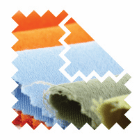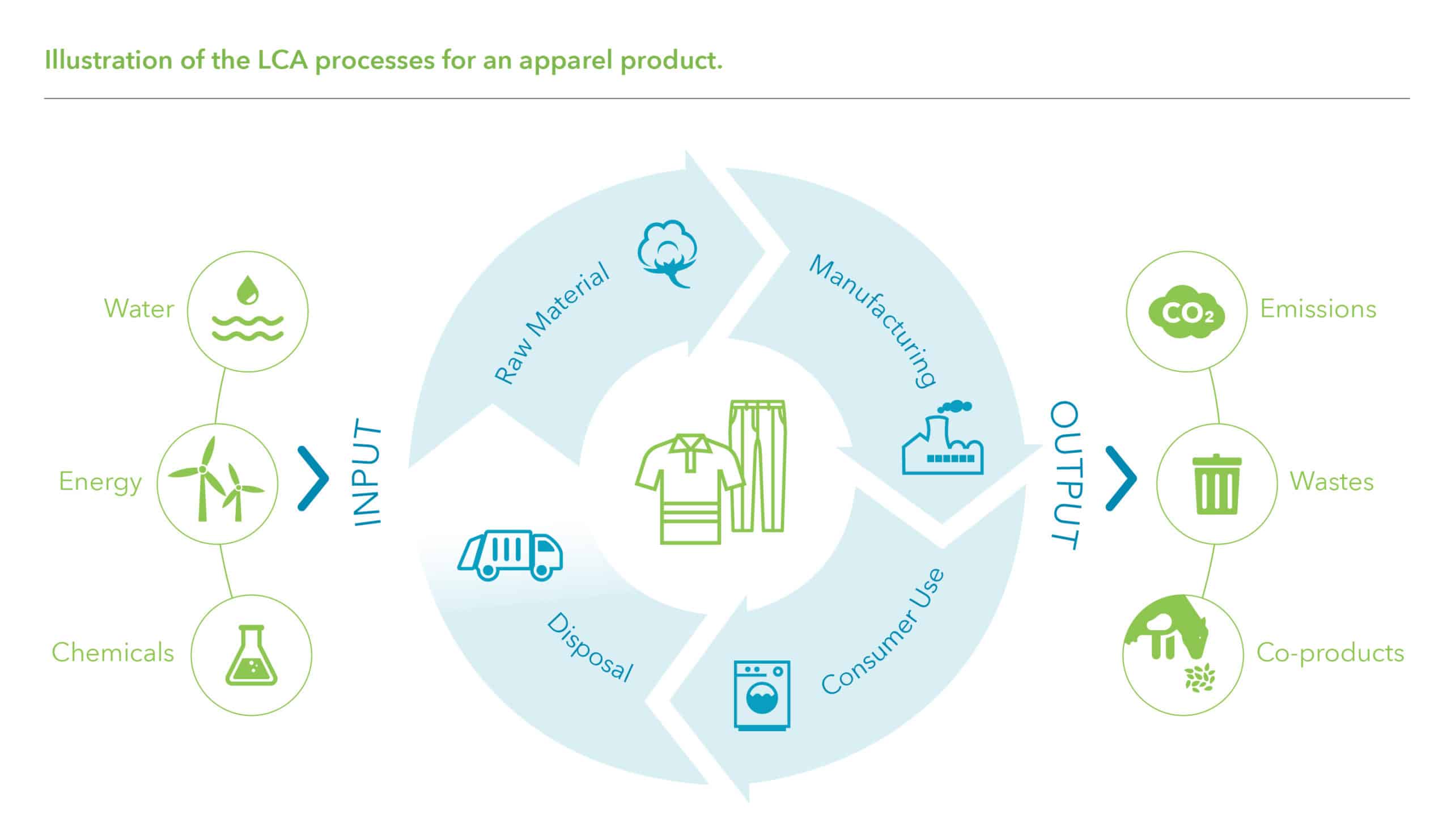
Life Cycle Assessment
Life Cycle Assessments (LCA), sometimes called a life cycle analysis, are designed to holistically examine the environmental impacts and resource utilization of a given product, from the raw materials used to create it all the way to that product’s end of life, when it is disposed. An LCA is useful for understanding where and when a product’s biggest environmental impacts occur, and comparing the impact of different alternatives. A fundamental part of an LCA is the Life Cycle Inventory (LCI), which quantifies relevant energy and material input and environmental release data associated with manufacturing and other processes. In simple terms, an LCI is a database to store data needed to conduct a life cycle assessment.
Cotton Incorporated developed a first-of-its-kind Global Cotton Life Cycle Assessment in 2010, last updated in 2016. The primary purpose of this assessment is to provide robust and recent LCI data for global cotton fiber production and textile manufacturing to ensure cotton is accurately represented in LCAs. The LCA was performed to evaluate the environmental impacts of three cotton garments: t-shirt, knit casual collared shirt, and woven casual pant. The study was conducted according to the principles of the ISO 14040 standard1 and subjected to a critical review.
The LCA is divided into three primary phases:

Agricultural production (seed to production of a bale of fiber from the gin).
Agricultural data were collected from the United States, India, China, and Australia to represent average production conditions from 2010 to 2014. These countries represented the top three cotton-producing and cotton-exporting countries during the study period.

Textile processing (bale to fabric to cut-and-sew). To collect the best quality data, textile mills that have relationships with Cotton Incorporated account representatives were selected based on the products that they manufacture, their level of vertical integration, and their location. Countries and regions of interest (South/Central Asia, East Asia, Eurasia, and Latin America) were identified based on world textile manufacturing volume.

Use (consumer use and disposal). Consumer use behavior data points were collected using an international, third-party market research company. The data reflects responses to a survey of consumers in the uppermost consuming countries (the United States, China, Japan, and the European Union) regarding their use and laundering practices for t-shirts, knit casual collared shirts, and casual woven pants. The survey was conducted from May through June 2015 by Cotton Council International and Cotton Incorporated using an international, third-party market research company.2

Key findings from the LCA:
Looking at the entire cotton lifecycle, the textile manufacturing and consumer use phases have the greatest impact in most categories – largely because of the energy consumed in those phases (for example, processing fibers during manufacturing or washing clothes in the laundry). While the agricultural phase’s impacts were lower in most categories, it still includes major contributors to the overall impact, such as ginning or water consumption.
Recommendations:
Continued improvement within the cotton garment production lifecycle should focus on optimizing cotton irrigation and fertilization in the agricultural phase; energy efficiency, use of cleaner energy and more environmentally friendly processes and processing chemicals in the textile manufacturing phase; as well as changing consumer behaviors in the use phase – especially related to laundry.
You can find an Executive Summary of the most recent assessment here and the full assessment here.
Check out this Sustainability Snapshot to learn more about why we conduct LCAs and the challenges with comparisons
Life Cycle Assessment of Cotton Webinar
- International Organization for Standardization (2007). Environmental Management – Lifecycle assessment – Principles and framework. 1-20. https://www.iso.org/standard/37456.html
- Daystar, J., Chapman, L., Moore, M., Pires, S., & Golden, J. (2019). Quantifying Apparel Consumer Use Behavior in Six Countries: Addressing a Data Need in Life Cycle Assessment Modeling. JTATM (Vol. 11).